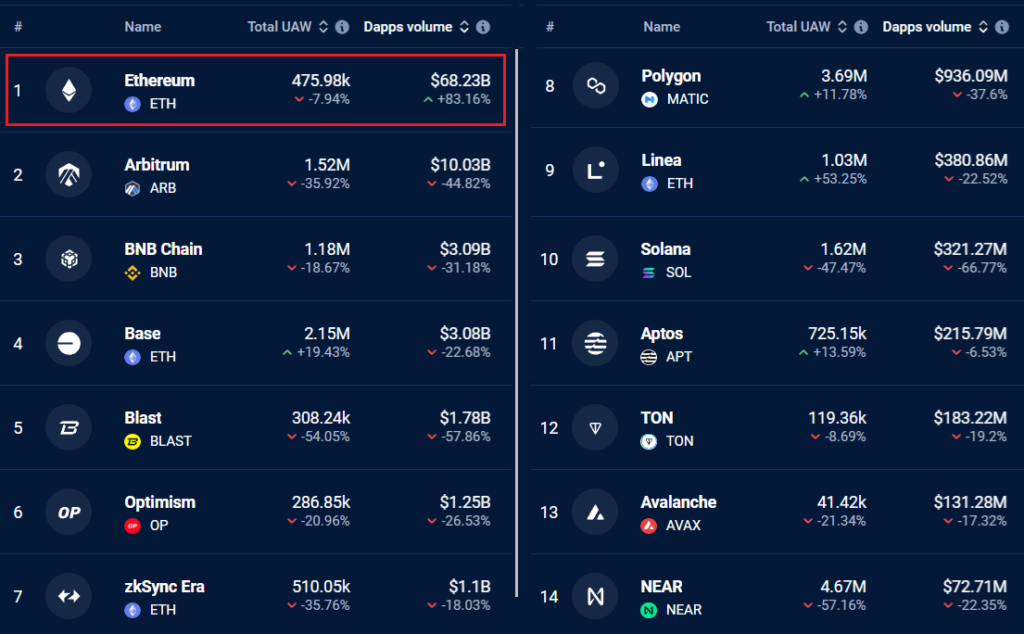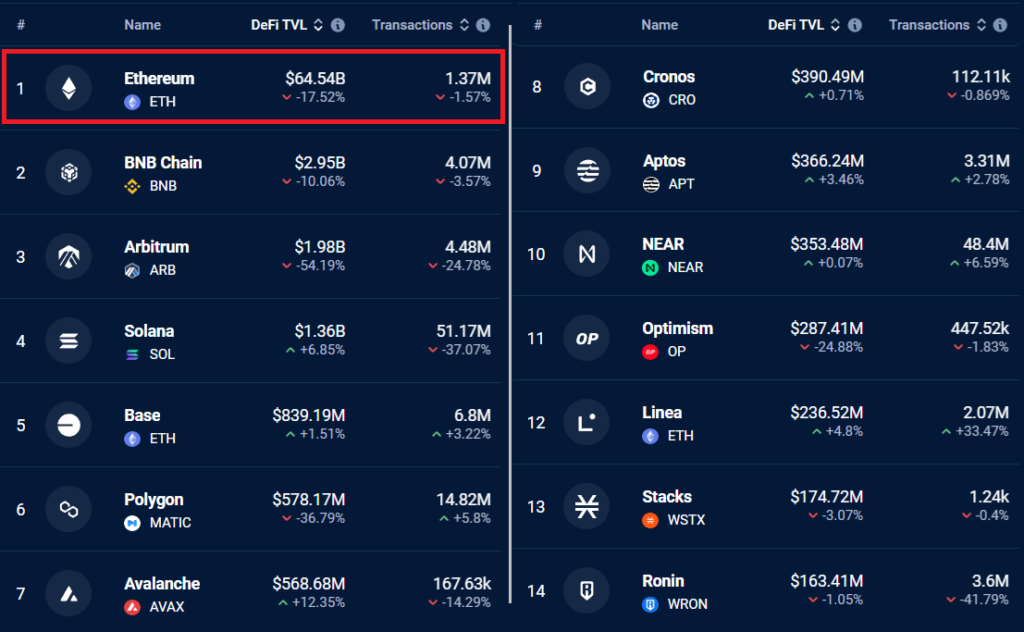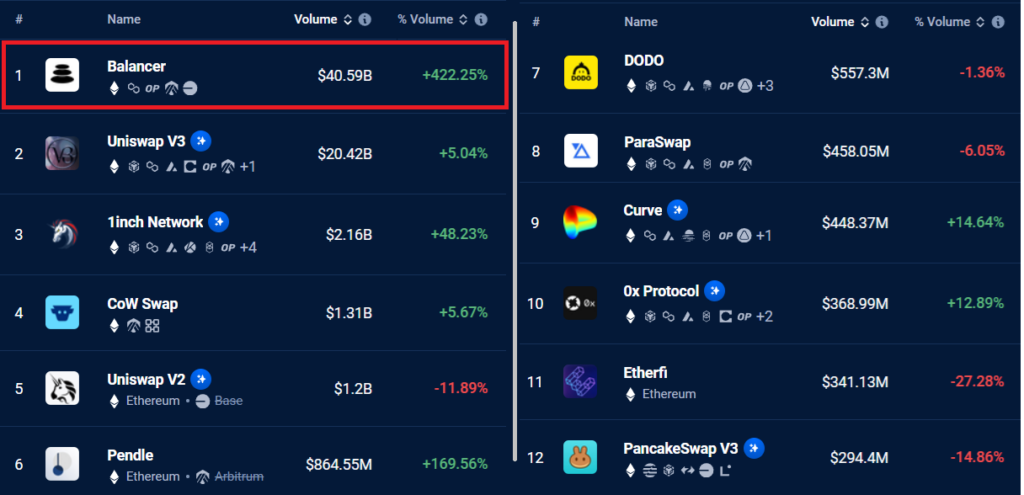Although Ethereum network volumes have increased, a single decentralized application constituted 59.5% of the network’s volume.
The Ethereum network remains the leader in adopting decentralized applications (DApps) in terms of deposits and volumes.
Even though competing chains like Solana and BNB Chain have lower transaction fees, which increase metrics such as unique active addresses, there is no preventative measure to prevent well-funded entities from inflating Ethereum’s DApp volumes.
The Ethereum network’s recent surge in activity starkly contrasts the broader cryptocurrency market trends and contradicts other utilization metrics.
Even with a substantial $2.4 transaction fee, figures can be distorted, particularly in decentralized finance (DeFi) applications, where deposits can exceed $1 billion. While it is impossible to corroborate any manipulation, it is essential to be aware of this.

It is important to note that Ethereum was the sole network in the top 20 to report an increase in volume, corresponding to an impressive 83% growth from the previous week.
To provide context, comparable protocols, including BNB Chain, Polygon, Solana, and TON, experienced an average volume decline of more than 30%. Furthermore, Ethereum’s 475,980 addresses are insignificant compared to the 1.18 million addresses of BNB Chain and the 1.62 million addresses of Solana.
Intriguingly, the surge in Ethereum’s volume was not accompanied by increased users. Ethereum experienced an 8% decrease in users compared to the previous week, as indicated by unique active addresses interacting with DApps. This is paradoxical, given the considerable volume increase, as Ethereum outperformed its competitors.
Ethereum’s increase in deposits may have compensated for the decrease in activity even thoughnumber of users having decreased due to the relatively high fees.

The data suggests that Ethereum’s total value held in DeFi applications decreased by 17.5% over seven days, while competitors such as Avalanche and Solana were able to attract deposits. In addition, the Ethereum network’s number of DApp transactions did not increase during this period of high volume, indicating that a more comprehensive analysis is required to comprehend the anomaly.

The Balancer’s 422% increase over seven days was the primary source of Ethereum’s volume growth, which amounted to an impressive $40.6 billion. For instance, this is 13 times the total activity on the BNB Chain during the same period.
Nevertheless, the DApp experienced a 5% decrease in unique addresses and a 14% decrease in transactions within the same week despite the significant volume increase in Balancer.
Ethereum’s volume development over the past seven days decreased by 5%, as this single DApp accounted for 59.5% of the network’s volume, excluding Balancer’s contribution.
BNB Chain Slashes Fees With Hard ForkAlthough it is not uncommon for a single DApp to dominate a blockchain’s volume—PancakeSwap is the primary driver of BNB Chain, and Uniswap holds nearly a 50% share on the Polygon network—the reported activity growth of Ethereum should be regarded with caution due to the distortion caused by the data of a single DApp.
It is difficult to ascertain the genuine demand that has driven the increase in the volume of Balancer. Although some transactions within the DApp are marginally profitable, more is needed to establish user intent definitively.
For example, the Binance exchange announced on July 1 that the Balancer (BAL) token was added to a watch list for potential delistings. This action may be associated with the DApp’s peculiar activity, although it is challenging to establish a direct correlation between the two events.



